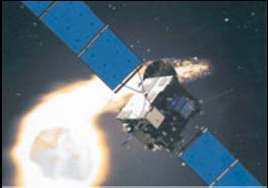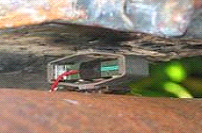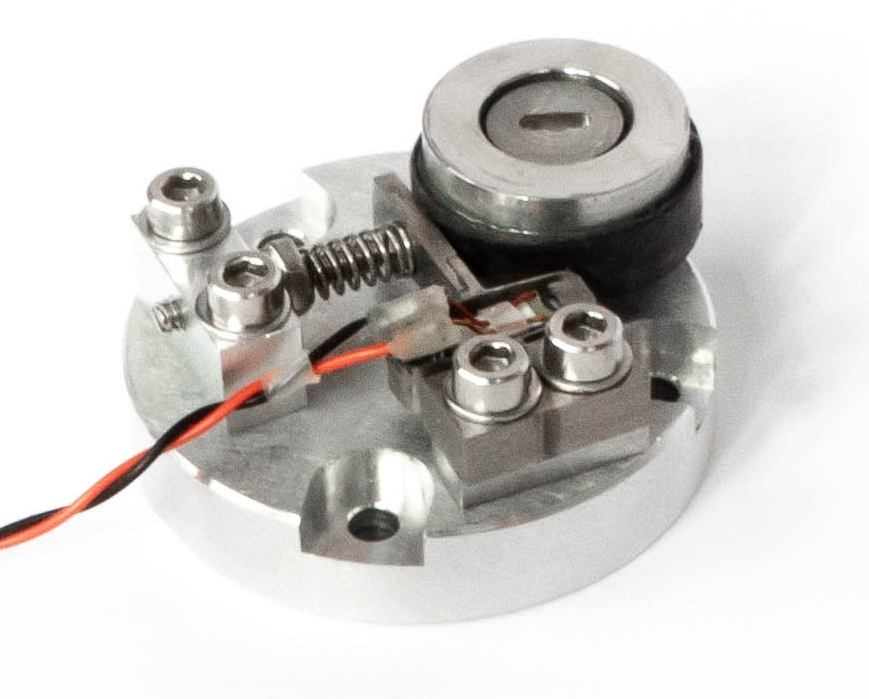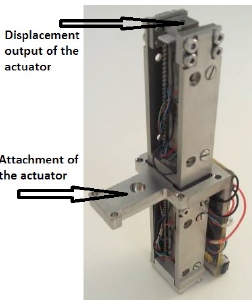Publications
Categories
- (34)
- (9)
- (3)
- (143)
- (18)
- (7)
- (4)
- (8)
- (9)
- (17)
- (2)
- (104)
- (7)
- (14)
- (7)
- (1)
- (1)
- (6)
- (155)
- (20)
- (2)
- (5)
- (111)
- (35)
- (11)
- (4)
- (59)
- (18)
- (3)
- (7)
- (62)
- (18)
- (5)
- (24)
- (7)
- (12)
- (1)
- (2)
- (2)
- (1)
- (1)
- (14)
- (13)
- (4)
- (6)

Rosetta Midas Stage Atila space applications
19 June 2023
The ROSETTA/MIDAS space mission intends to analyze the dust resulting from the Wirtanen comet using an Atomic Force Microscope (AFM). To scan the dust, an extremely fine mechanism able to produce displacement’s accuracy in the sub-micrometer range with a limited mass, is required. The only technology which can meet this specification is the piezoelectric
actuator associated to capacitive displacement sensors, which displays several advantages : solid state design, which means no friction, noise limited by the driving electronic, …

Rosetta Midas successful launching
19 June 2023
Successful commissioning of the first flight application for C. T. in ESA / ROSETTA mission. The ROSETTA satellite has been successfully launched the 2nd of March 2004 from Kourou, French Guyana, using an Ariane-5 G+ launcher. The rendezvous with the new targeted comet “Churyumov – Gerasimenko” is expected in November 2014.

Picard Sodism pointing mechanism based on PPA40M-NM-SV
19 June 2023
PICARD is a French space scientific mission. Its objectives are the study of the origin of the solar variability and the study of the relations between the Sun and the Earth’s climate. The Satellite wassuccessfully launched, on June 15, 2010 on a DNEPR
launcher from Dombarovskiy Cosmodrome, nearYasny (Russia). The payload consists in two absoluteradiometers measuring the total solar irradiance and animaging telescope to determine the solar diameter andasphericity.

Piezo transducers for tank monitoring – TWI – Sept 2005
19 June 2023
Detecting microscopic structural vibrations for monitoring storage tanks with piezoelectric transducers.

MSPA motors for rotary motions
19 June 2023
Modular Stepping Piezoelectric Actuators (MSPA) are inertial motors working under the stick-slip principle [1].
The advantages of rotary MSPA are unlimited stroke, torque at rest, high resolution, nonmagnetic and vacuum compatibility.
This paper presents the new MSPA developments regarding rotary motion at Cedrat Technologies for macro and
micro sizes MSPA. These progresses follow the previous technical investigations around noise reduction, miniaturization
at low voltage and the integration of MSPA modules [2]. In this paper two rotary piezo motors are presented: The first
one is a macro size MSPA based on APA40SM. It is developed to work under nuclear environment: operational temperature
up to 70 degrees, vacuum, 5 Tesla magnetic field and high radiation fields (3,5 kGy/hour gamma radiation power
and 500 Mn/(cm².second) neutron radiation power). The second is a micro size MSPA based on APA30uXS. This motor
is used for embedded application such as nonmagnetic shutter.

Nanometric linear piezo-actuator with integrated Strain Gages for high stability positioning
19 June 2023
Many applications require a mechanism capable of nanometric resolution position tuning, and with the ability to maintain perfectly this position for a long time (more than several days). For those applications, piezo-actuators are a perfect fit since they easily provide nanometric resolution. However, they require the use of a position sensor to be able to maintain stable position over time. Until now, the long-term stability of strain gages (SG) for position measurement was questionable. Using its extensive know-how of strain gages integration and new instrumentation equipment, Cedrat Technologies has managed to demonstrate the ability of a piezo-mechanism with integrated strain gages sensors to achieve nanometric position stability. This technology opens new possibilities for industrial, aeronautical, and space applications.


